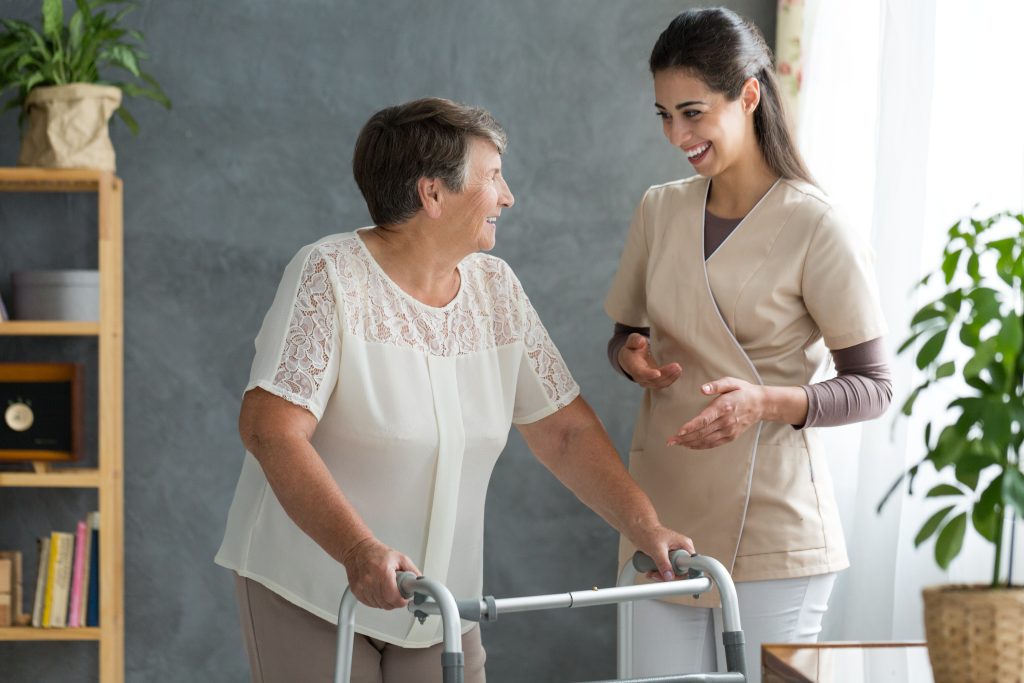Shaking the Stigma: Raising Parkinson’s Disease Awareness
April 2024

As we enter Parkinson’s Awareness Month, it’s an opportune time to educate yourself and your loved ones about this progressive neurological disorder that affects movement and coordination. James Parkinson first identified Parkinson’s Disease in 1817, and it has since affected around 10 million people globally, primarily those over age 60.
Diagnosis is challenging since no specific test is available, and the symptoms vary from person to person, often overlapping with other similar illnesses. That’s why it’s important to be vigilant and aware of the common signs, which can be early indicators of Parkinson’s Disease.
Early Signs of Parkinson’s:
- Tremors: Shaking or tremors, often in a limb or hand, is a common sign of Parkinson’s Disease.
- Bradykinesia: Refers to the slowness of movement, making simple tasks like getting dressed or walking more difficult.
- Rigidity: Stiffness in the limbs or trunk of the body.
- Loss of Smell: Difficulty in detecting or identifying smells, or loss of smell altogether, is often an early indication of Parkinson’s.
- Postural Instability: Losing balance or frequently tripping, particularly when standing up or turning.
It’s important to note that these symptoms may not necessarily mean an individual has Parkinson’s Disease, as they can also indicate other health conditions.
If you experience any of these symptoms, speak with a healthcare professional for an accurate diagnosis.
Risk Factors:
The exact cause of Parkinson’s Disease is unknown, but several risk factors may increase the likelihood of developing the condition. These risk factors include:
- Age: The risk of developing Parkinson’s Disease increases with age, with most diagnoses occurring in people over age 60.
- Genetics: Researchers have found that specific genetic mutations can increase the likelihood of developing Parkinson’s Disease. However, most cases of Parkinson’s Disease are not due to genetic factors.
- Environmental Factors: Exposure to certain toxins and chemicals, such as pesticides and herbicides, may increase the risk of developing Parkinson’s Disease.
- Gender: Men are more likely to develop Parkinson’s Disease than women.
- Head Injuries: Traumatic brain injuries increase the risk of Parkinson’s Disease.
- Family History: Having a close relative with Parkinson’s Disease increases the likelihood of developing the condition.
Tips to Reduce your Risk:
- Increase Exercise
- Maintain a Healthy Weight
- Eat more Fish, Fruits and Veggies
- Engage in memory-stimulating activities, such as word games, puzzles, music, baking or gardening.
In addition, speak with your primary care provider about establishing an appropriate screening schedule for your needs.
Treatments:
While there is no cure for Parkinson’s, treatments can help manage symptoms and improve quality of life. The main treatments for Parkinson’s Disease consist of medications and surgery, which aim to manage the disease’s motor and non-motor symptoms.
- Medications: can manage motor and non-motor symptoms by increasing dopamine levels in the brain. Common medications include levodopa, dopamine agonists and MAO-B inhibitors.
- Surgery: Deep brain stimulation (DBS) can help reduce tremors, stiffness, and other symptoms of Parkinson’s Disease.
- Physical Therapy: can improve mobility and help manage symptoms such as muscle rigidity and balance issues.
- Speech Therapy: can improve speech and swallowing difficulties.
- Occupational Therapy: can assist with daily activities such as dressing, eating, and personal hygiene.
- Mental Well-Being: maintaining good mental health is crucial for effective disease management. This can include therapies such as cognitive-behavioral therapy or support groups.
If you or a loved one believes you are experiencing symptoms of Parkinson’s Disease, it’s important to speak with a healthcare provider to receive a proper diagnosis and treatment plan.
Finding out you have Parkinson’s can be challenging, and fear often leads to delayed doctor visits. Early action offers the best chance of controlling symptoms and slowing disease progression. Bringing someone with you and taking notes and questions can be helpful when seeing a specialist.
Click here to head back to our blog page. Make sure to follow us on Facebook to stay updated with everything at Stone Co. Rehabilitation and Nursing Center.
More Stories
Tips for Sticking to Your New Year’s Resolution
December 2024 | ArticleAs we head into the new year, we often face the question, “What is your New Year’s resolution going to…
International Infection Prevention Week
October 2024 | GeneralOctober 13-19 is International Infection Prevention Week. Observed each third week of October, this week is dedicated to highlighting the…
October is Breast Cancer Awareness Month
October 2024 | Awareness DayOctober is Breast Cancer Awareness Month, a time dedicated to spreading awareness about the impact of breast cancer and the…
